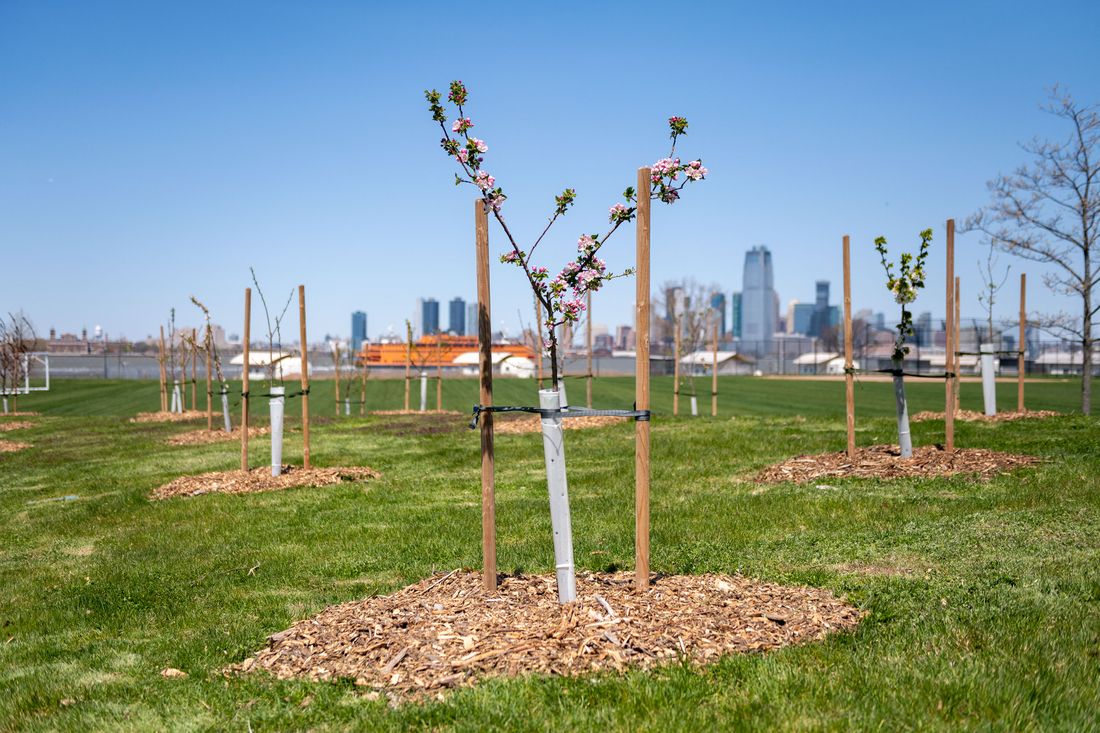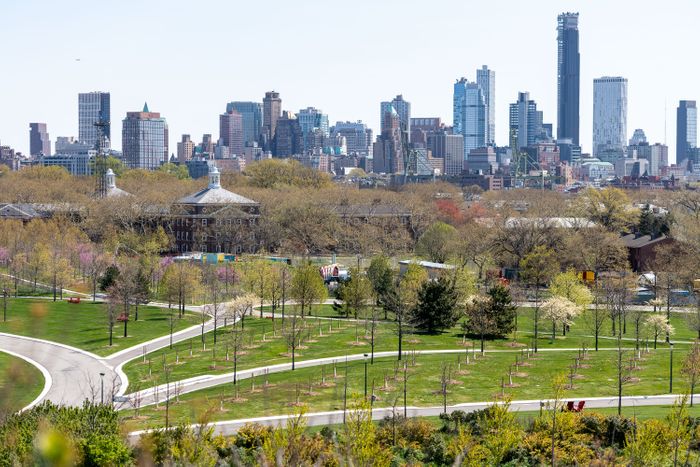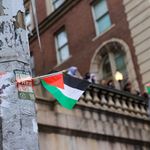
Sam Van Aken, an artist and a sculpture professor at Syracuse University, has been hoarding samples of rare fruit trees for close to a decade. It all started when he tried to graft a tree that would yield a flourish of red, pink, and white blossoms so it would look as if it were painted by an Impressionist. It took 40 different kinds of fruit, and “it got out of hand,” Van Aken says. As he collected varietals for his tree — he had over 200 samples of plums alone — a university professor told him he now had the largest collection of plums in the eastern United States. He was floored. “I’m approaching this purely from an artistic perspective. How does that happen? How sad is that?” he says. Then he felt anxious. “I was like, Oh my God, I need to preserve these!”
His idea of preservation was to figure out a way to grow these trees near a major city so people could easily access them. He shopped his public-orchard idea around for about four years before finding an enthusiastic collaborator in the Trust for Governors Island. With this location, the project became focused on fruit trees that once populated New York City. Van Aken is especially interested in older varietals that have disappeared as a result of industrial farming. More than a hundred of them are now growing in Open Orchard, a public installation that opened on Friday. In a few years, once the trees have matured, you’ll be able to roam the one-acre orchard and pick (and taste!) their fruit: almonds, apples, apricots, plumcots, cherries, peaches, nectarines, pears, persimmons, and plums. Around 100 more trees will be dispersed to community gardens in the five boroughs. Van Aken wants us to think a little more deeply about fruit as a cultural, historical object and about how our food system works, but mostly he just wants you to taste something you’ve never had before: “I’m hoping you bite into something and you’re like, Why have I been kept from this? What sort of compromised existence have I been living?”
Fruit-tree cultivation in New York goes back further than any written records. When Giovanni da Verrazzano and Henry Hudson reached New York Harbor in 1524 and 1609, respectively, they observed beach-plum trees growing near the shores. The Lenape cultivated persimmons and black cherries, which are native to the East Coast, but also crab apples, which originated in the Ohio River Valley, showing that fruit cultivation had existed for many years before Europeans brought their own trees over. Peaches were introduced to North America by Spanish monks in the 1500s, but Europeans arriving in New York in the 1600s found them growing in Indigenous people’s orchards so assumed they had always been grown here. Soon, colonists set up their own private orchards, transforming fruit trees from a public good into a private product. The Prince Nursery, which operated from 1737 to 1865 in what is now Flushing, was the first major nursery in the United States.
Nationally, there was a large wave of interest in fruit from the 19th to the early 20th centuries; one guide to apples published by the USDA in 1905 featured 17,000 varieties. The connoisseurship around eating fruit was almost like wine tasting today. The people who developed these fruits gave them evocative names, and Van Aken is often amused by them. “Early Strawberry, Yellow Nonsuch, Seek-No-Further — and then there are ones where you’re just like, What?!” he says. Like the Teton de Venus, a peach variety that was thought to have disappeared. “The translation is actually horrible. It’s ‘the breast of Venus,’” he adds.
But fruit growing in the United States is now very segmented and concentrated, with industrial farmers choosing which varieties to cultivate based on how well they can hold up during shipping as well as for their aesthetics and ease of growing. Most of the country’s commercial stone fruit is now grown in California, while apples thrive in New York. It’s how we end up with monoculture and the same mealy Red Delicious apples in all 50 states. The Golden Russet used to be one of the most common apples grown in New York, but because of its rough skin, it has lost popularity with growers. It’s one of Van Aken’s personal favorites right now. “To me, they’re the best-tasting apples, and they have the best texture,” he says. “People need to taste these fruits because they’re so wildly different from anything we’re getting at grocery stores and, to some extent, even at farmers’ markets, too.”
As I looked over the list of trees in Open Orchard, I noticed one name that was familiar to me but that I hadn’t seen in many years: the Black Tartarian cherry. This variety of tree grew in my family’s yard when I was a child and ended up dying when I was in middle school. The tree never produced that many cherries (and was really just there to pollinate the Bing cherry tree next to it), but they were better tasting than any other cherry I’ve had. I remember its extremely sweet, concentrated flavor — almost like a syrup. I can’t wait to eat one fresh off the tree once more.






